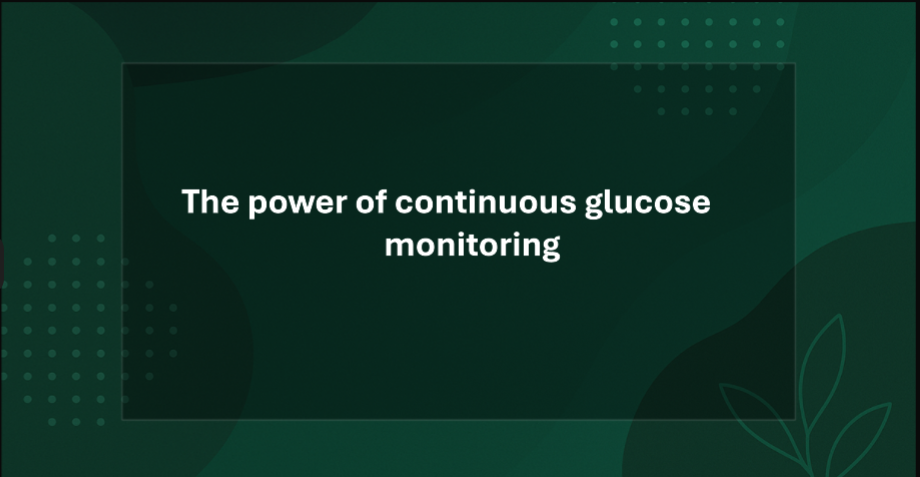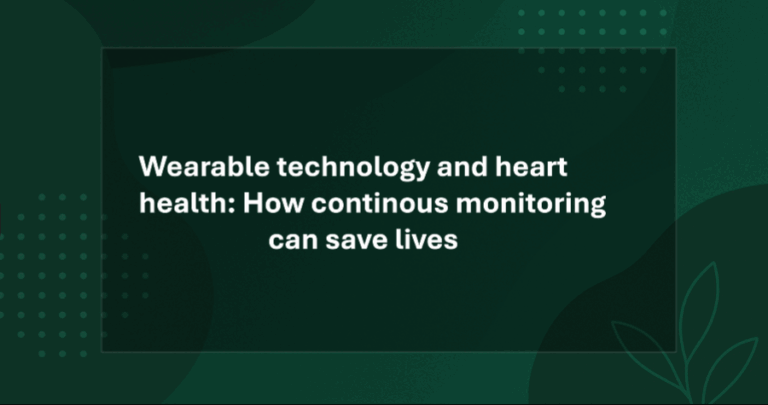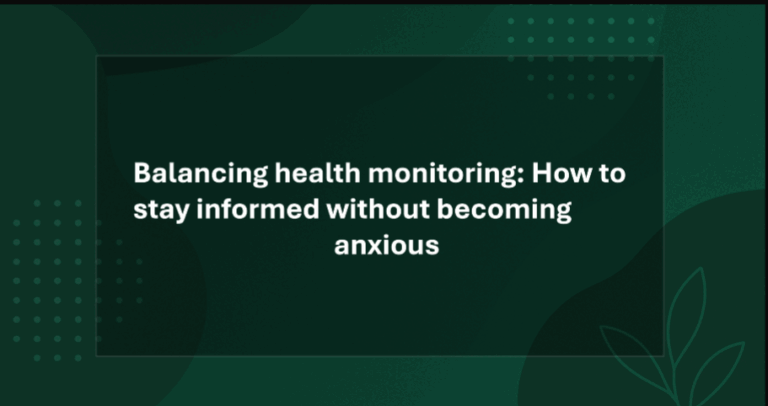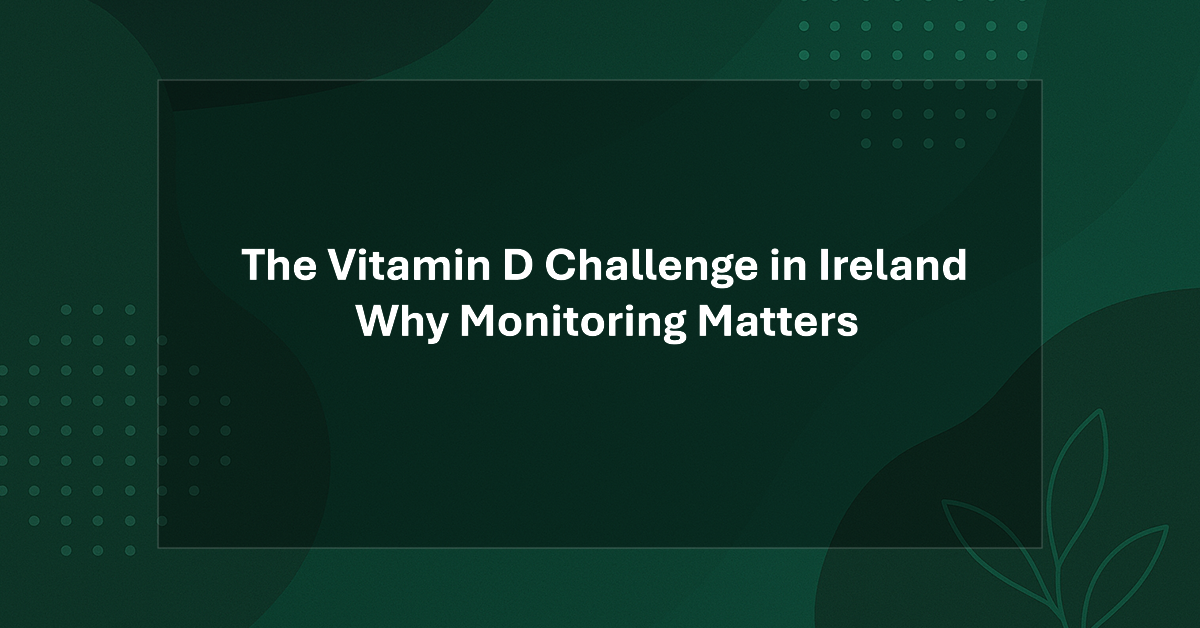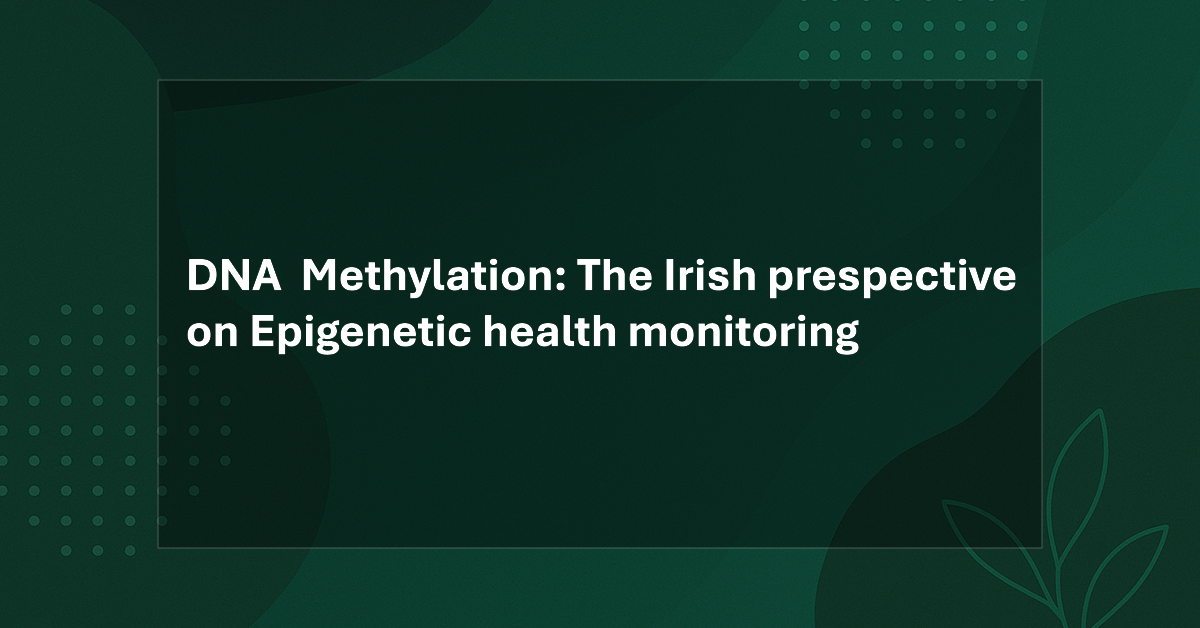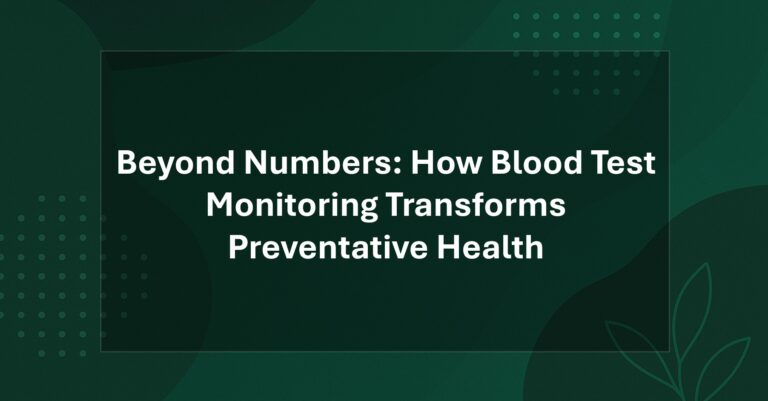The Power of Continuous Glucose Monitoring
Beyond Diabetes Management
For decades, glucose monitoring has been primarily associated with diabetes management. However, emerging research suggests that tracking blood glucose levels can provide valuable insights for everyone, not just those with diabetes. This comprehensive approach to health monitoring is transforming how we understand metabolism, energy levels, and long-term health outcomes, particularly in Ireland, where diabetes affects approximately 225,000 people, with thousands more undiagnosed (1).
Understanding Glucose Dynamics
Glucose is the primary fuel that powers our cells, and maintaining optimal levels is crucial for overall health. When we consume food, particularly carbohydrates, our blood glucose levels rise. In response, our pancreas releases insulin to help cells absorb this glucose for energy or storage.
While most people without diabetes can maintain blood glucose within a healthy range, fluctuations still occur throughout the day. The magnitude, frequency, and patterns of these fluctuations can provide valuable insights into metabolic health, even when average glucose levels are normal.
The Emergence of Continuous Glucose Monitoring in Ireland
Traditional glucose monitoring involved finger pricks to obtain blood samples, providing only isolated snapshots. Continuous Glucose Monitoring (CGM) technology has revolutionised this process by offering real-time, around-the-clock insights.
Modern CGM systems typically consist of a small sensor inserted just under the skin, which measures glucose levels in interstitial fluid every few minutes. This data is transmitted to a smartphone or dedicated receiver, creating a comprehensive picture of glucose dynamics.
In Ireland, the adoption of CGM technology has been growing steadily, with the Health Service Executive (HSE) now providing coverage for certain CGM devices for people with Type 1 diabetes (2). However, the benefits may extend beyond this population.
The Evidence for Broader CGM Use
Support for CGM’s benefits beyond diabetes management is growing. A 2023 observational study followed over 5,000 non-diabetic adults who wore CGM devices for two weeks. Researchers found that a majority experienced glucose spikes (>140 mg/dL) after meals, despite having normal fasting glucose and HbA1c levels (3).
More importantly, participants with greater glucose variability showed increased markers of inflammation and oxidative stress—factors associated with ageing and chronic disease risk.
Another study published in a leading endocrinology journal found that individuals with higher glucose variability had a 26% increased risk of cardiovascular disease over a 7-year follow-up, independent of average glucose levels (4).
Beyond Blood Sugar: The Wider Impact of Glucose Monitoring
The benefits of continuous glucose monitoring extend well beyond blood sugar tracking:
Energy Management and Performance
Athletes using CGM to optimise nutrition timing reported improved energy levels and faster recovery. By minimising glucose crashes and promoting stability, users experienced fewer energy slumps throughout the day (5).
Preliminary findings also suggest that stable glucose levels may positively influence cognitive performance. One study indicated a 14% improvement in attention during complex tasks when glucose variability was reduced (6).
Sleep Quality
Glucose levels and sleep quality are interconnected. Poor sleep can disrupt glucose regulation, and unstable glucose levels can interfere with sleep.
Data from sleep research indicates that participants who maintained more stable glucose levels in the evening reported better sleep efficiency and more time in restorative sleep phases (7).
This is especially relevant for Ireland, where 29% of adults report poor sleep quality, with many unaware of the potential metabolic contributions (8).
Weight Management
One promising application of CGM is in personalised nutrition and weight control. A 2022 study published in Cell found that glucose responses to identical foods vary widely among individuals (9).
Participants using CGM to tailor their diets based on their own glucose responses experienced significantly reduced glucose variability and achieved greater weight loss compared to those following general dietary guidelines.
This personalised approach may be particularly valuable in Ireland, where obesity rates have tripled since 1990, with 60% of adults now overweight or obese (10).
Real-World Applications in the Irish Context
Personalised Nutrition
CGM allows individuals to see how their bodies respond to specific foods. Many discover that commonly perceived “healthy” foods cause glucose spikes, while others considered “unhealthy” do not.
A 2023 study found that meals tailored to CGM data resulted in 41% less glucose variability and higher diet satisfaction compared to standard guidelines (11).
This approach can be beneficial in Ireland, where staples like potatoes, bread, and dairy affect individuals differently.
Stress and Recovery Monitoring
Stress hormones such as cortisol impact glucose levels, often causing elevations independent of food intake.
One study found that CGM data could identify stress-related glucose fluctuations with high accuracy, suggesting a potential use in stress and recovery monitoring (12).
Considering that 22% of Irish workers report high stress levels, CGM may offer insights for workplace wellness programmes (13).
Exercise Optimisation
Different exercises impact glucose in various ways. High-intensity workouts may elevate glucose temporarily, while moderate exercise tends to lower it.
Research suggests that timing workouts based on glucose patterns may enhance performance and recovery (14).
With 46% of Irish adults meeting physical activity guidelines, CGM could help optimise routines for health gains (15).
Integration with Irish Healthcare Systems
CGM’s true potential lies in integration with broader health monitoring. When combined with metrics like heart rate variability and sleep data, CGM contributes to a fuller health picture.
One 2024 study found that using CGM data for non-diabetic patients improved early detection of metabolic disorders by 34% and reduced preventable hospitalisations by 22% (16).
Given that diabetes-related healthcare costs in Ireland exceed €1.4 billion annually, early intervention via CGM could yield significant savings (17).
Pre-Diabetes Detection in Ireland
Pre-diabetes is prevalent in Ireland, affecting 14% to 44% of adults depending on diagnostic criteria (18). CGM may help identify at-risk individuals before Type 2 diabetes develops.
Research from Trinity College Dublin suggests that glucose variability may be a better predictor of diabetes risk than traditional markers in some populations (19).
The Future of Glucose Monitoring in Ireland
Advances in CGM technology promise greater accessibility and impact:
- Non-invasive sensors that eliminate skin insertion
- Predictive algorithms offering personalised recommendations
- Integration with wearable tech for holistic health tracking
- Wider access through reduced costs and expanded insurance coverage
According to a report from University College Dublin, CGM could become as common as fitness trackers within five years, with an estimated 40% of health-conscious individuals adopting it (20).
Conclusion
Continuous glucose monitoring marks a breakthrough in personalised health tracking. It offers real-time insights into how our bodies respond to food, stress, and exercise, enabling more informed decisions about lifestyle and wellness.
Even for non-diabetics, understanding glucose patterns can help optimise energy, improve sleep, manage weight, and reduce health risks.
As CGM technology becomes more accessible and integrated into healthcare, it may play a pivotal role in preventative health strategies across Ireland.
This article is based on current scientific understanding and peer-reviewed research. Always consult healthcare professionals regarding your personal health needs.
References: **References:** 1. Diabetes Ireland. (2024). Diabetes prevalence in Ireland: Current statistics and trends. 2. Health Service Executive. (2023). CGM reimbursement guidelines for Type 1 diabetes in Ireland. 3. Johnson A, et al. (2023). Glucose variability in non-diabetic adults and associations with inflammatory markers. Nature Metabolism, 5(3), 415-427. 4. Zhang L, et al. (2022). Glucose variability and incident cardiovascular disease: The Atherosclerosis Risk in Communities study. Journal of Clinical Endocrinology & Metabolism, 107(8), 2372-2384. 5. Rodriguez NR, et al. (2023). Continuous glucose monitoring in elite athletes: Effects on performance and recovery. International Journal of Sports Nutrition, 33(2), 145-153. 6. Chen Y, et al. (2024). Glucose stability and cognitive performance: A controlled trial. Journal of Applied Physiology, 136(4), 512-521. 7. Tasali E, et al. (2023). Interactions between glucose metabolism and sleep architecture. Sleep Medicine Reviews, 58, 101426. 8. The Irish Sleep Society. (2023). National Sleep Survey: Patterns and disturbances in Irish adults. 9. Zeevi D, et al. (2022). Personalized nutrition by prediction of glycemic responses. Cell, 180(5), 1072-1085. 10. Safefood Ireland. (2023). Obesity trends in Ireland: A national health challenge. 11. Gardner CD, et al. (2023). Personalized nutrition based on continuous glucose monitoring versus standard dietary advice. American Journal of Clinical Nutrition, 117(3), 657-668. 12. Epel ES, et al. (2023). Continuous glucose monitoring as a biomarker of psychosocial stress. Psychoneuroendocrinology, 147, 105913. 13. Health and Safety Authority Ireland. (2023). Work-related stress statistics in Ireland. 14. Jeukendrup AE, et al. (2023). Glucose-guided exercise timing improves performance outcomes. Journal of Applied Physiology, 134(6), 1542-1553. 15. Sport Ireland. (2023). Irish Sports Monitor Annual Report. 16. Steinhubl SR, et al. (2024). Integration of continuous glucose monitoring in preventative healthcare. npj Digital Medicine, 7, 28. 17. Irish Department of Health. (2023). Economic cost of diabetes in Ireland. 18. O’Connor L, et al. (2021). The prevalence and correlates of pre-diabetes in middle- to older-aged Irish adults using three diagnostic methods. PLOS ONE, 16(6), e0253537. 19. Trinity College Dublin. (2023). Glucose variability as a predictor of Type 2 diabetes in Irish adults. 20. University College Dublin. (2024). The future of wearable health monitoring in Ireland. UCD Healthcare Innovation Lab White Paper.
